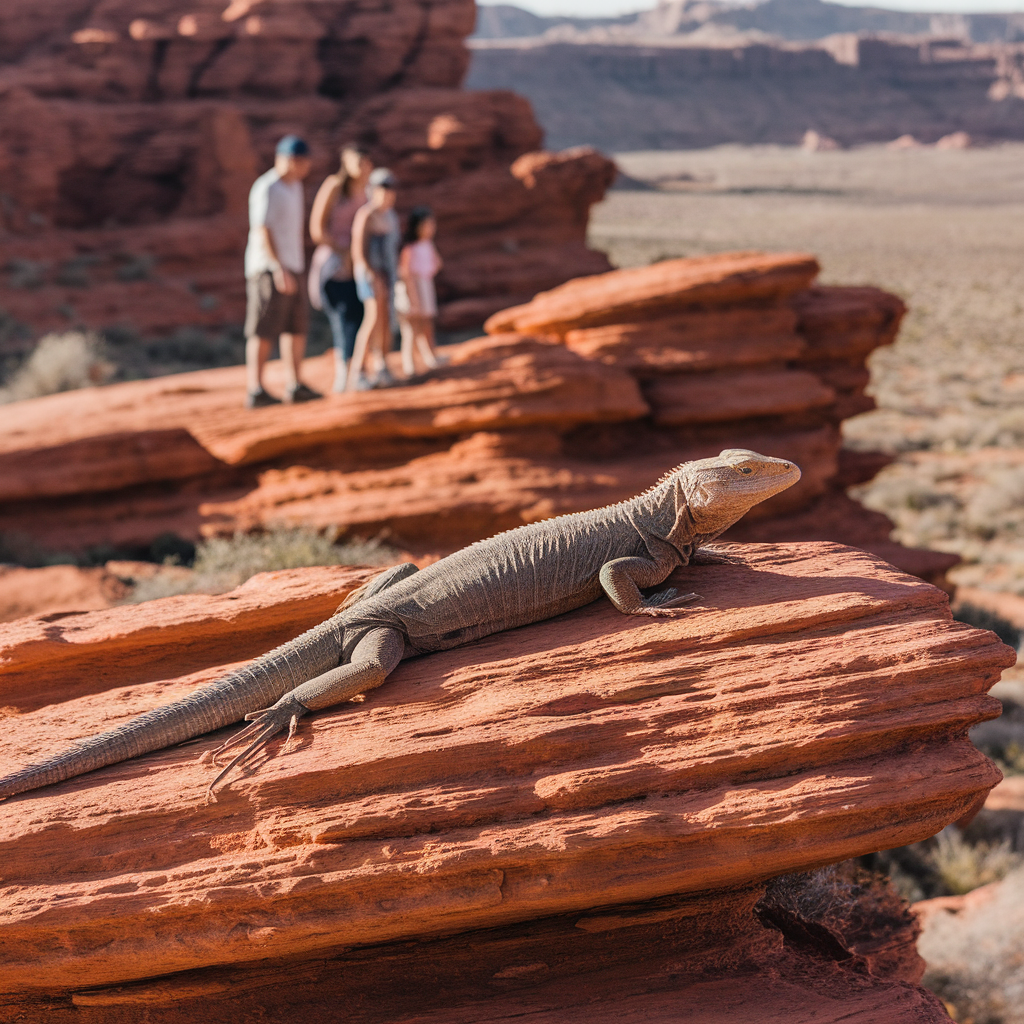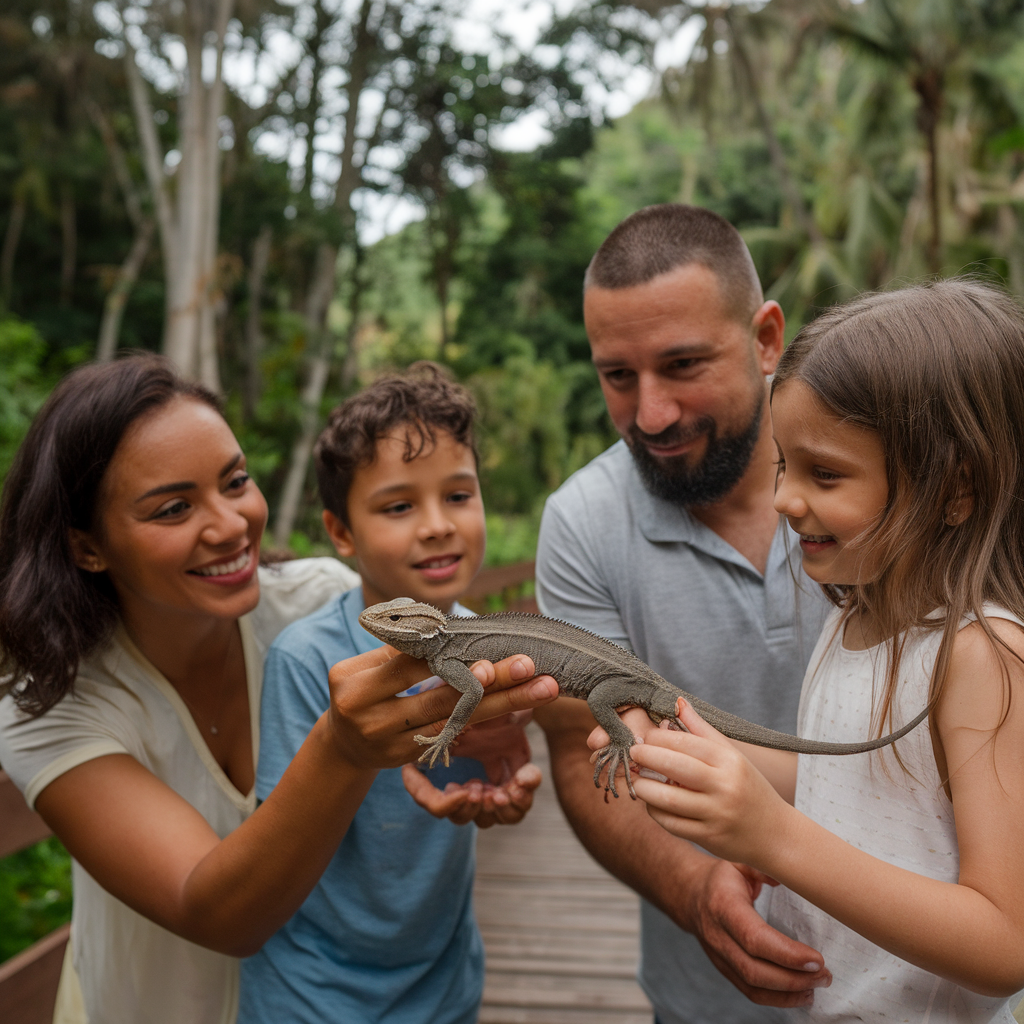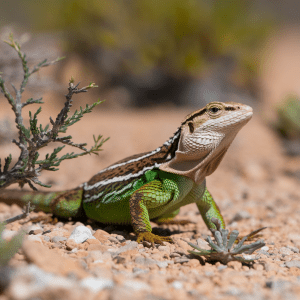Family lizard guide: Easy Care Tips
Did you know that nearly four million U.S. homes now have reptiles as pets? Lizards have slithered their way from deserts and rainforests right into our family rooms. If your kids are obsessed with all things scaly and green like mine, they might be asking for their first pet lizard. Maybe you don’t have much experience with reptiles or even know their… scent. Last weekend I visited a friend who has a leopard gecko, and I left smelling just like a cucumber salad kissed with damp sand.
Our Family lizard guide will help you make sense of the basics so you can become a master of lizard care. You’ll learn what gear you need, how to set up your habitat, and how to keep children, yourself, and your lizard smiling for years. You’ll discover what happened the first time my daughter tried to feed a hungry chameleon its breakfast. Ready to dive in?
Choosing the Right Lizard for Your Family

When you gather the family around the table to talk about getting a pet lizard, two big questions come up right away. Which lizard is best for our home? And what makes it a perfect fit for both the grownups and the kids sharing the space? If your family is like mine, you want a critter that is friendly, fun to watch, and happy in your living room or play area.
What to Look for in a Family Lizard
Some lizards make great pets for beginners while others have special needs or get a little too big for comfort. The best family lizard guide picks will probably be the bearded dragon, leopard gecko, or blue-tongue skink. These lizards enjoy hanging out with people and do not get nervous with normal household noise or gentle young fingers. When I met my first bearded dragon, his calm attitude won the parents over and his odd little beard made the kids giggle.
Start by asking yourself, how much room do we actually have? Bigger lizards need a bit more space and food, and younger children tend to enjoy smaller pets anyway. It also matters if you want a watching pet or a holding pet. Some lizards love to sit on your hand or shoulder (hello, bearded dragons) and some do better behind glass. No matter what you pick from your family lizard guide, check with your local vet to see if there are any health restrictions in your area.
Habit matters too. Some lizards are fine if you hold them every day, while some need their alone time to recharge. The leopard gecko, for instance, chills on your desk, catches crickets, and barely makes a sound. But tree-dwelling tokay geckos or feisty iguanas climb up everything they see and need more experienced keepers. I learned the hard way that chameleons are better left to folks who already keep lizards; their needs are too crunchy for young keepers.
The big idea is to match your family’s vibe with your lizard’s needs. A good rule is to work your way up if you start to catch the lizard bug and want a bigger challenge. Every home can be a good lizard home as long as you plan, research, ask questions, and pick a species every grownup can handle too. That’s as real as it gets when you talk practical choices from a family lizard guide.
What You Need Before Bringing a Lizard Home
A little pre-planning goes a long way toward a stress-free welcome home for your scaly new pet. Even before you bring your first lizard home, you’ll need to gather all the essentials so your pet can settle in safely. Welcome to the “Family lizard guide” school of thought, where peace of mind is priceless.
Your First Purchase Checklist
Get that shopping cart ready; here’s what made our lives easier with a first lizard. You’ll need an enclosure (terrarium or tank), a secure lid, bedding, and heat and UVB lights. Having food dishes, water bowls, a temp/humidity gauge, and places to hide are a must too.
It truly helps to have these on hand because lizards are vulnerable to stress—and boy, it hits fast. Their home and temperature need to stay steady from day one. A stressed lizard will show it by hiding or refusing to eat, and it doesn’t take a degree in reptile science to tell when these cool creatures are unhappy.
Also, pick up starter food recommended by your local pet store, along with a calendar or chart where you can jot daily notes—trust me, you won’t remember what each lizard ate otherwise. Minimize chaos. Maximize health.
Finally, include the whole crew in the planning stage, not just whoever is buying supplies. Chat about responsibility so everyone’s on the same page for feeding, cleaning, and gentle handling.
Staying organized and calm during those important first days helps kids learn to care for someone new and builds real teamwork. Your “Family lizard guide” should always start with confidence, good supplies, and a can-do spirit. This habit encourages both real expertise and plenty of family stories for the years ahead.
Creating a Safe Habitat for Your Scaly Friend
Lizards may look tough and fast, but in truth, many families lose their first gecko Martha or bearded dragon Blaze because of a simple mistake—they couldn’t take the heat.
The guide that comes with your enclosure may give you wattage numbers and rough temperature ranges, but many lizard parents don’t realize that losing 10% of your moisture amount or 5 °F in your chosen basking spot during the wrong circadian window can either mean a) a cold and sick new friend, or b) an overheated casualty in no time. Shelters and veterinarians say they see a 5-in-10 injury or rehoming incident due to an enclosure problem—almost all traced back to flooring, window placement, or handling of electrical wires or a replacement heat rock without checking it for defects.
You could drill down to the microclimate for each terrarium accent… or you could just err toward “set it and check it” and go easy on your sanity—and on Martha and Blaze. Since this is the “Family lizard guide,” and realism wins, here’s how to check your work and create a truly safe home that won’t spoil your fun when you head out, overnight or long-term.
Heat, Humidity, and Setup: Testing vs Trusting
No matter which materials you pick, trigger points win the day. Avoid the common “fevered gadgets in a box” look that plagues travel stores; instead, concentrate first on placing a stable hide right under and around your chosen heat source.
Here’s what separates the experts from the hobbyists, are you ready? Test your entire enclosure before introducing any live animals. If you are using a glass tank, a horizontally widened plastic cube from a pet store, a cardboard-and-plastic hybrid, or repurposed furniture, invest in a quality “dual zone” thermometer and a humidity checker. Head out for 24 hours, run the full heat cycle and nighttime drop, and swing back.
Take and log notes as if a living creature were already there. If your coldest spot stays 3–5 °F above the lowest recommendation for your species and your basking warms up within 7–10 °F of the top before falling back safely overnight, and your humidity cycles cleanly (without pooling) at least two times… you are free to “meet the team” and entertainment can commence! Here’s a fast cheat-sheet guide based on what “Family lizard guide” live-blogged from last trip using store-bought materials.
If you only get one test kit and order just enough to allow a new habitat an overnight before actual arrival, every enclosure can be checked for safety (with a “fire drill” style open-and-check test every two weeks after setup), without having to run out or order a new module.
Don’t turn the whole operation off to save cash or battery possession for hours. Budget for a reliable timer with solar-smart backup or one with app or off-site integration. Kids like the anticipation almost as much as lizards do! Can’t remember the model name you bought? Take a photo or reference the original packing slip and add that to a taped note near the control wire or plug on the nearest outlet.
Back with more clarified choices from “Family lizard guide” in the full travel blog. Brand note: Message us any challenge that stumps you, from dealing with slanted device windows to silica off-gassing issues; we take transparency and real-life product search as next-tier mission points to navigate the new landscape of exposed brands for the modern family!
What Do Lizards Eat? Feeding Tips and Tricks

Some pets will eat pretty much anything in sight. Lizards are not usually in that camp. Each species is different, and sometimes, one lizard may hate what another loves. That means meal planning starts early in your family lizard guide. Let’s talk menu basics, including shopping lists that keep things easy for busy parents and kids who want to help.
You might find that small lizards like anoles adore crickets and mealworms, while slow, gentle blue-tongued skinks clean up after Taco Tuesday with big bites of lettuce, blueberries, and squash. Always check with your local herp vet or trusted breeder about species-specific diets, especially when dealing with wild treats like dandelions or home-grown cucumbers.
How Much to Feed: Finding the Perfect Balance
Start small and plant yourself by the enclosure to see how much gets gobbled up. Hungry lizards may run right to dinner and do laps with tails wagging. Shy eaters might need dim lights or peace and quiet. The trick is to keep records just like you wrote baby’s first words or holiday milestones. Make notes and turn the family lizard guide into an eater’s logbook to help spot picky patterns and know when it’s time for a new treat or a visit to the doc.
Plan out feedings. If your new pet is a carnivorous lizard, get on a schedule that lines up with cricket or worm deliveries from a store. Herbivores or omnivores? The greens and fruits from your morning smoothie or salad bar work in a pinch, but make sure you remove uneaten leftovers before food spoils.
Feed with fingers, tongs, or a small plastic spoon, and always wash your hands after. Try not to be discouraged when food launches across the living room; it’s all part of the fun. And if light bulbs flicker or the AC blasts nonstop, remember that lizards get sluggish or hyperactive depending on the weather and season—a big thing to note for families using this family lizard guide for their very first scaly explorer.
Handling and Interacting with Your Lizard
You have set up the tank and picked out the coolest lizard since Geico. Now, you probably wonder if your lizard wants to cuddle on the couch with you. The short answer is… not really.
Your new pet may learn to feel safe with you, but that takes some patience and lots of treats. What I find? Most lizards definitely have a preferred side of the tank and a few snack favorites. But do not expect them to act like a dog who gallops over for hugs.
First Steps for Friendly Handling
First, let your lizard settle in for at least a week after you bring it home. No poking from eager fingers while it learns its territory. For babies and shy types, let them see you just feeding and watching for several weeks. Soon, they will poke out from rock piles to check you out.
When it is time to handle her, start by putting your hand in the tank. Let her check it out without picking her up at first. They get to know your scent and learn you are not a threat.
Once your friend seems mellow with your hand near, edge your hand under her chest and gently scoop up. Avoid grabbing from above, swinging, or holding very tight. Lizards can wriggle free or get hurt if squeezed.
If she panics, gently return her to her favorite corner. Do not chase or shout. Wait for her to calm down, no rush.
Next time, try a bit more handling or offer a treat from your palm, like a dried mealworm or tiny slice of fruit. Keep your sessions short and positive. Stop if she seems stressed, breathes hard, or bites. That just means she needs more time getting used to things.
Making Handling Safe and Fun
Keep small children seated while holding the lizard. Lizards can get spooked by quick moves and fall. Quick hands and surprise petting are for dogs, not our climbing pals.
Adults should supervise at all times, teach gentle moves, and wash hands well after every touch. Some lizards can carry Salmonella or other germs, which is serious business for little ones or folks with weak immune systems.
With very shy or downright crabby lizards, always use soft tongs or let them be. Part of the joy of reptiles is appreciating their “watch only, please” style.
If you keep at it, your pet will recognize you, come over for a snack, maybe even climb your arm for the best view in the living room. With quiet consistency and respect, you will know each other’s signals like old friends.
A good family lizard guide recommends sessions that happen at the same time of day, use the same voice for praise, and end with a treat or return to their favorite log. Predictability equals trust.
With the tips above, the “Handling and Interacting with Your Lizard” chapter of any family lizard guide can make even new reptile fans feel like naturals.
Kid-Safe Lizard Activities for Rainy Days
It might be raining cats and dogs outside, but your family lizard guide can help you keep the kids—and your lizard—happy and active indoors. On those gloomy afternoons, you do not have to worry about bored kids or unhappy pets. Let’s get creative with a few lizard-friendly and kid-safe activities you can enjoy in the comfort of your own home.
Interactive Rainy Day Fun
First, you can help your lizard go on a scavenger hunt. Hide treats in their enclosure using small, clean dishes or safe plants. This keeps your lizard’s mind active, and it is so much fun to watch them search. You can snap pics or shoot a little home movie for the grandparents.
Next, work together to craft some new furniture for your cold-blooded pal. All you need are empty cardboard boxes, craft sticks, or toilet paper tubes. Design climbing ramps, caves, or little tunnels. Just make sure everything is lizard-safe and free from glue or paint. My kids really put their creative thinking hats on for these, and it becomes a highlight for the entire family.
Set up an art zone nearby and let your children draw or paint their favorite lizard from the family lizard guide. If you are feeling extra adventurous, you could all make lizard-themed bookmarks, stickers, or homemade note cards. Younger kids can draw on sticky notes and use them to label features of the lizard habitat for extra science points.
Older children may enjoy researching fun facts about the species you have at home. Encourage them to create a mini-presentation or Rainy Day Lizard Quiz for the family—winner picks the next movie night film.
When you embrace the rainy-day spirit and dive into lizard-friendly crafts and activities, both your family and your lizard bond a bit more. Every day becomes a new page in your own family lizard guide, and you just might discover a new passion or hidden talent along the way.
Caring for Your Lizard on Longer Vacations
If you’re planning a vacation that lasts more than a few days, you’ll want to set your lizard up for safe and simple care before you start packing. That way you can relax on the beach or up in the mountains without worrying that you forgot to tell your pet sitter about a sleepy lizard’s mysterious bathroom habits. If I had a nickel for everything I didn’t put in writing before I left home… Well, let’s just say, write things down. Lizards aren’t as hard to care for when you’re away as cats or dogs, but they do need the basics covered before you close the door behind you.
Taking your time on preparation starts well before you leave and will avoid headaches and panic later. The more routine things are, and the less your family lizard’s environment or foods change, the safer things will be while you’re off adventuring.
Pre-Trip Checklist: Your Lizard’s Safety Net
If you’re going to board your pet with a professional (and that’s a great option for long trips), book early and ask what’s provided, including the size of any spare enclosures and what brand of heating or lighting they offer. Give clear feeding instructions—not everybody knows an anole from an armadillo—so your lizard’s snacks make sense.
If you’ll hire a pet sitter or a neighbor’s older kid, leave double the food portions your lizard will need, portioned and labeled by date. Have everything labeled in at least two separate spots—think peanut butter on bite night or mealworms in the butter compartment. Type out a one-page guide to basic routines and common issues about heat, water, food, light, and poops, and post a backup copy near the enclosure itself, so nobody has to rifle through your email or your silverware drawer.
Lizards need stable heat and light every day, so add a new bulb to your “before-trip” checklist and swap it into the main light, keeping the old one as a spare. Label outlets, timers, and switches so that nothing weird happens to the schedule because somebody trips it getting to another pet or meets your fuzzy hallway socks. I usually tape back-up heat pads and even a small plug-in thermometer to the tank. Friends who aren’t lizard-wranglers sometimes forget how important basking and cooling down is for a cold-blooded pet.
Monitoring humidity, clean water, and cage substrate is just as important as food. Check it all thoroughly before you leave. Spell out for your caretaker how often you want things tidied or dampened.
Finally, set a reminder to check in with whoever’s checking in on your lizard—just a simple “all’s well” text so you can concentrate on making memories of hiking, exploring, or taking photos for your own family lizard guide while you’re away. Don’t worry. Your lizard is basking contentedly, dreaming of bugs, until you return.
Finding Community and Support for Lizard Lovers
If you want to go far with lizards, do it together. Raising a lizard can feel lonely, especially when you crave support or advice. Good news, though. Finding a sense of community is way easier now than it used to be. You have so many choices for finding help and friendship along the way.
Finding Your People
Start close to home. Some local pet stores host lizard classes or meetups. If you have a favorite spot for supplies, ask about posting boards or upcoming reptile events. Next, check with your school or local nature center. Many places offer kid-friendly programs about interesting creatures (think lizards, geckos, or even snakes—I’ll pass on the snakes, personally).
Online spaces are treasure troves, too. Visit trusted forums like Reddit’s r/Reptiles or “Lizard Lovers United” on Facebook. Both offer helpful advice, easy trade talk, and friendly answers to newbie questions. Many folks would rather ask recent strangers online than struggle alone in silence. We’ve all been there.
The younger kids love learning with the “Family lizard guide” at hand while older siblings connect in forums. Discuss fun projects, discover rescue groups, or swap escape tales (is that Rodrigo under the fridge again?). Who knows, you might even make a new long-distance pen pal.
If your lizard gets ill—or just does something weird a lizard should not—call your exotic vet first. If there is not an exotic vet nearby, community connections could help with fast answers or hard-to-find experts, both in person and online.
Family support is worth more than gold. Start today. Use this Family lizard guide and local resources to make the reptile journey one that grows with your kids.
Conclusion
Bringing a lizard into your family’s life is a bigger adventure than most folks expect. Once you start thinking about things like “Should I let my toddler feed the lizard?” (probably not) or “Did we put its heat lamp too close to the bookshelf?” (oh dear), you realize reptile parenting is both wild and wonderful. With a little bit of prep—like setting up a safe world in your living room and understanding that geckos usually prefer fruit over fish sticks—you’re on your way to becoming a savvy pet parent.
Don’t worry if this all feels new to you. The family lizard guide aims to take the guesswork out of caring for these scaly pets, one relatable story at a time. From Day 1 setups to mid-vacation checklists, we’re building authority and confidence right beside you. Have something you wish you knew before you started? Share your wins, flubs, or facepalm moments anyway. Let’s grow this resource from real talk, not just perfect Instagram moments.



